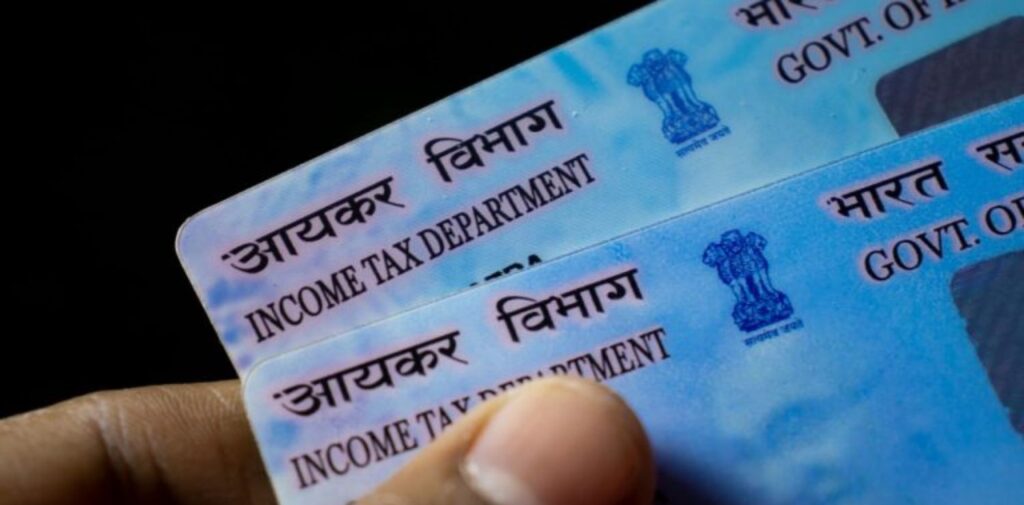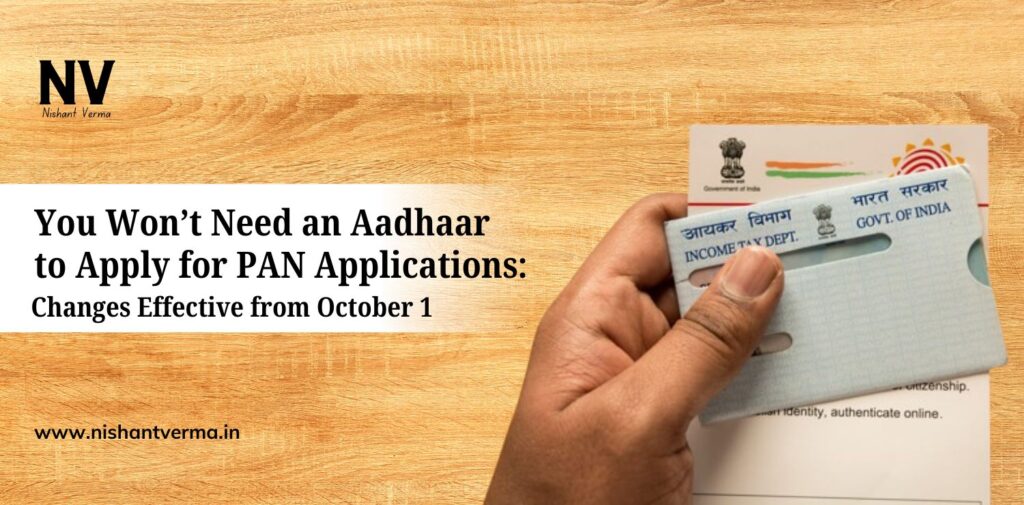Starting October 1, a significant change has been introduced to the process of applying for a Permanent Account Number (PAN) in India. As per the latest updates, individuals will no longer require an Aadhaar number to apply for a PAN card. This move is aimed at preventing the misuse and duplication of PAN cards, enhancing transparency, and easing the application process. Alongside this, other rule changes have also been implemented, making it crucial for taxpayers and individuals to be aware of these updates.
PAN Applications Rules
No Aadhaar Requirement for PAN Application: The most notable change that took effect from October 1 is the removal of the mandatory Aadhaar requirement for PAN applications. Previously, individuals had to provide their Aadhaar number or Aadhaar enrollment ID for a new PAN application or while updating existing PAN details. The new rule eliminates this obligation, simplifying the process for those who may not have an Aadhaar or wish not to use it.
Implication for Tax Filers: While Aadhaar is no longer necessary for PAN applications, it is still required for Income Tax Return (ITR) filing and other tax-related purposes. The linking of PAN and Aadhaar remains mandatory for those filing taxes, ensuring that the government can continue tracking financial activities efficiently. Therefore, even if individuals apply for a PAN without using their Aadhaar, they must eventually link the two for tax purposes.

Restrictions on Using Aadhaar Enrollment ID: From October 1, the Aadhaar enrollment ID will no longer be accepted in place of an Aadhaar number for PAN applications or ITR filing. This step is being taken to curb the misuse and duplication of PANs, which often arise when individuals use their enrollment ID for the application. This change aims to plug loopholes that allowed for PAN duplication, resulting in a more robust system for financial tracking and fraud prevention.
Increased Stringency in Verification Process: With the exclusion of Aadhaar enrollment IDs, the verification process for new PAN applications is expected to become stricter. Applicants will need to provide alternative identity and address proofs such as a passport, voter ID, or driving license. This will help ensure that only authentic information is submitted, thereby reducing the chances of obtaining multiple PANs or fake PANs.
Impact on Financial Transactions: PAN cards are crucial for various financial transactions, including opening bank accounts, investing in mutual funds, and purchasing real estate. The change in rules is not expected to affect these activities directly. However, individuals who wish to keep their PAN and Aadhaar unlinked can now apply for a PAN without worrying about mandatory linkage during the application phase.
Why These Changes Were Made
The government’s move to alter the Aadhaar-PAN linking rules was motivated by concerns over privacy, security, and misuse. By removing the Aadhaar enrollment ID as valid proof for PAN applications, the authorities aim to curb the proliferation of duplicate and fake PANs. This, in turn, will strengthen the financial infrastructure and reduce the scope for tax evasion and fraudulent activities.
Challenges and Concerns
Potential Confusion Among Applicants: While these changes simplify the PAN application process for some, they may also lead to confusion, especially for those accustomed to using their Aadhaar number. Educating applicants about the new rules will be necessary to prevent delays and errors during the application process.

Need for Clear Communication: With the new rules in place, the Income Tax Department and related authorities need to communicate these changes effectively. This includes updating online portals, government websites, and PAN service centers with the latest guidelines and requirements.
Compliance Issues for Taxpayers: While Aadhaar is no longer required for applicants, its mandatory linkage for tax filing remains unchanged. This could create a compliance gap for individuals unaware of the distinction, leading to penalties or issues during ITR submission.
Other Rule Changes Effective from October 1
Apart from the changes in PAN application rules, a few other regulations have come into effect, which include:
- KYC Norms for Mutual Funds: The Securities and Exchange Board of India (SEBI) has introduced stricter Know Your Customer (KYC) norms for mutual fund investors. All new investors must complete their KYC procedures as per the updated guidelines.
- Regulations for Insurance Policies: The Insurance Regulatory and Development Authority of India (IRDAI) has implemented new rules regarding the issuance of insurance policies, particularly in the health and motor insurance segments. These rules focus on ensuring transparency and reducing the mis-selling of policies.
How to Apply for a PAN Under the New Rules
For individuals who wish to apply for a PAN without using their Aadhaar, the process is straightforward. Here’s a step-by-step guide:

- Visit the Official PAN Application Website: Go to the official PAN application website (e.g., TIN, NSDL)
- Fill in the Application Form: Select the appropriate form (Form 49A for Indian citizens or Form 49AA for foreign citizens). Fill in all the necessary details like name, date of birth, and address.
- Provide Alternative Identity and Address Proof: Instead of Aadhaar, submit other valid proofs such as a passport, voter ID, or driving license. Ensure that the documents are valid and updated.
- Submit the Application and Make Payment: Review the details, make the necessary payment, and submit your application. After successful submission, you will receive an acknowledgment slip.
- Track the Status: Use the acknowledgment number to track the status of your PAN application. Once approved, your PAN card will be delivered to your registered address.




